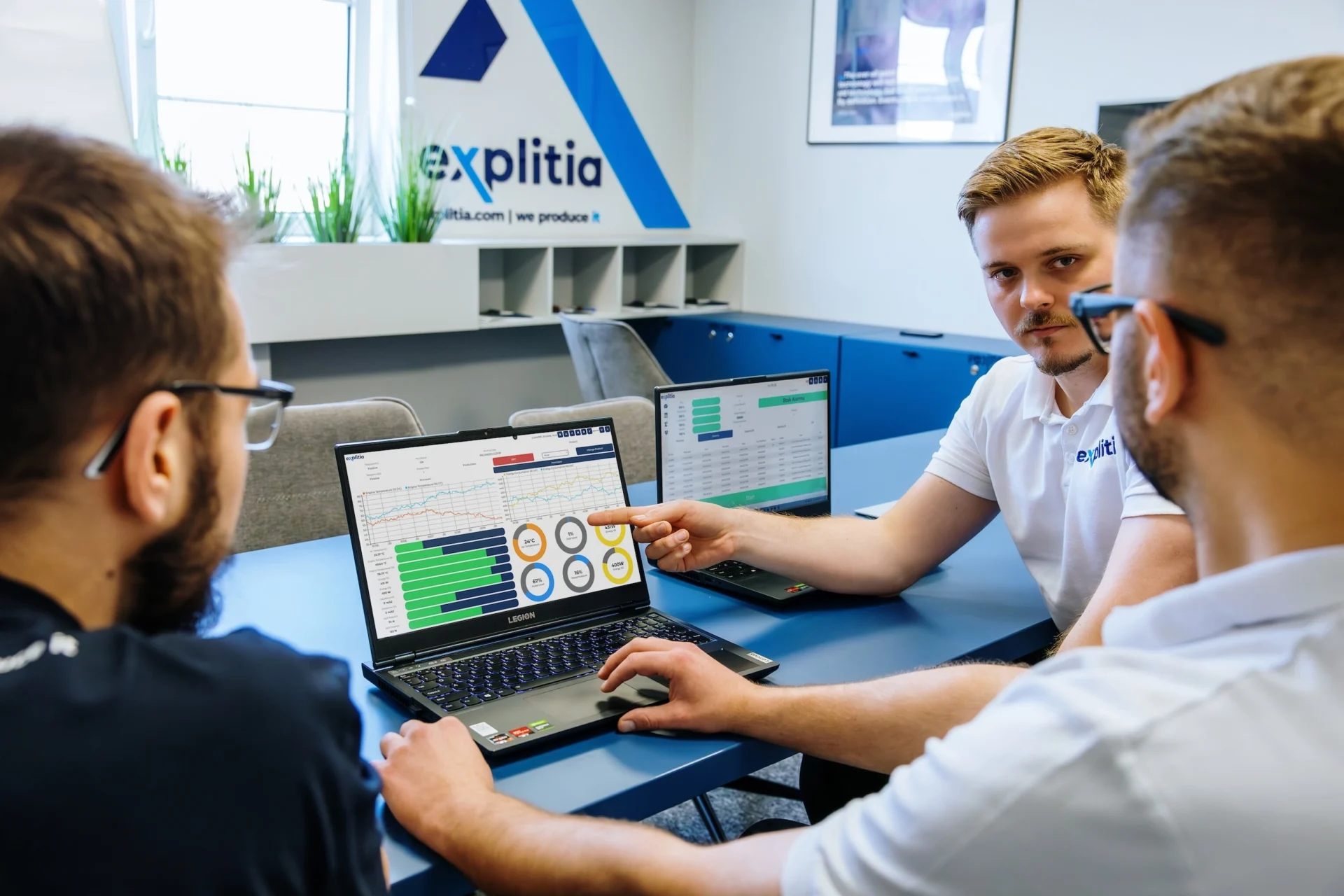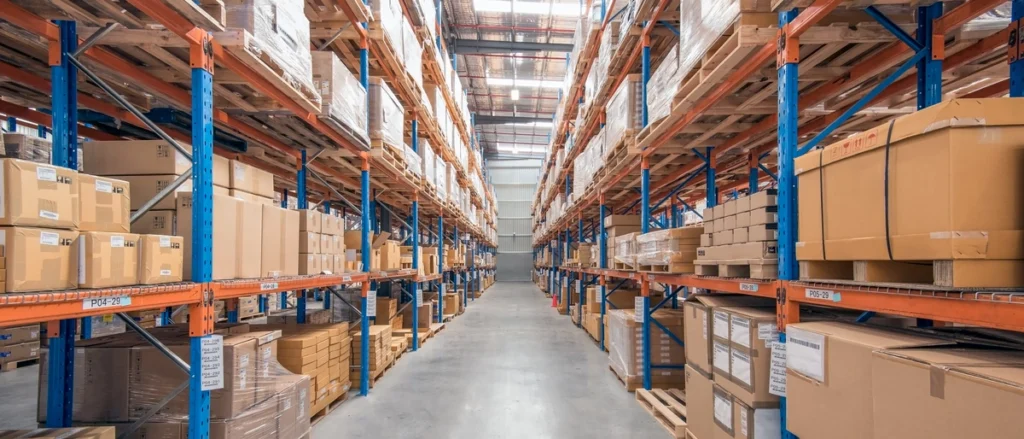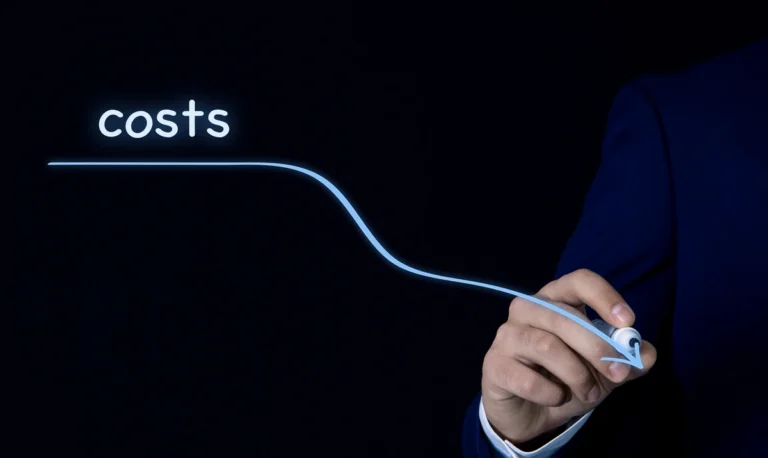Production costs give many entrepreneurs chills down their spines. And it’s no surprise – profitability, competitiveness, and the ability to grow the business all depend on them. Let’s take a closer look. Find out what affects production costs and how they can be effectively controlled.
Production costs analysis – why it matters
Imagine you’re the captain of a ship. Suddenly, the wind picks up. Waves crash against the hull, and rain pours from the sky. You dream of a safe and dry harbor. What do you do – steer blindly, or keep your hands firmly on the compass and try to stay on course?
That ship is your manufacturing plant, and the stormy conditions represent fluctuating raw material prices and energy costs. Far on the horizon lies the vision of a profitable company. What can serve as your compass? A cost structure analysis that helps you regain control of the situation.
Regardless of the size of your company or the industry you’re in, a thorough cost structure analysis allows for strategic decision-making regarding the optimization of production processes.

Materials and raw materials – a key component of production costs
In the vast majority of industrial companies, materials and raw materials make up the largest share of total production costs. Their price, availability, quality, and storage method directly impact the final cost of the product.
Without a detailed analysis, however, it’s impossible to notice indirect costs. As a result, companies incur expenses related to excessive inventory storage, losses from expired or damaged goods, etc.
The key to optimizing costs in this area lies in accurate material requirement planning, negotiating favorable terms with suppliers, and minimizing production waste. Modern IT systems, including ERP systems, allow real-time monitoring of material usage and more precise delivery planning, leading to efficient resource utilization, waste elimination, and reduced storage and inventory maintenance costs.
Labor and wages in the production cost structure
The wages of operational staff, maintenance teams, logistics, or quality departments are a significant part of the expenditure – especially in companies that have not yet implemented automation.
Depending on the level of automation in production processes, employee-related costs can range from 15% to even 50% of production costs in the short term. This area is influenced by:
• base wages for production workers,
• additional costs (insurance, social benefits, training),
• expenditures related to human resource management.
Effective use of human resources through proper shift planning, upskilling, and motivational systems can significantly reduce unit labor costs. It’s worth noting that in a manufacturing company’s balance sheet, employee-related costs are typically classified as direct (production workers) and indirect (administrative and support staff) costs.
Optimization of production processes – through automation, clear OEE indicators, and reporting systems – helps leverage team potential and reduce costs without cutting jobs.

Do you know what drives production costs in your company?
Write to us, and together we’ll find solutions to optimize production costs in your business!
Energy and resources – impact on total costs
Energy and resource consumption (water, gas, compressed air) accounts for an increasingly large share of production costs. Hence, the energy efficiency of machinery directly affects product pricing. With continuously rising electricity, gas, and water prices, more and more companies are asking what drives production costs and where savings can be found. The answer might seem difficult – but only at first glance.
Modern energy monitoring technologies make it possible to identify optimization opportunities that lower costs. Surprising? Not really – imagine an automated data analysis showing that one production line consumes 20% more energy than others, with no technological justification. Thanks to simple actions like adjusting production schedules, maintenance, or process optimization, the company can reduce the energy intensity of that line.
Many companies also invest in heat recovery, lighting modernization, energy management systems, or alternative energy sources to reduce utility consumption.
Technology and automation vs. production costs
Although implementing IT systems or automating processes involves initial investment, from the perspective of long-term product cost calculations, these are among the most profitable actions, as they lead to:
• reduced labor costs by automating repetitive tasks,
• improved product quality and fewer defects,
• increased productivity and efficiency in manufacturing processes,
• lowered maintenance costs through predictive servicing,
• shorter production cycle times,
• optimized material usage.
Technologies such as MES, SCADA, traceability systems, or ERP integrations allow precise tracking and real-time analysis of processes.
Moreover, these systems support effective decision-making – showing, for example, which products generate the highest margins and which merely occupy production capacity.

Logistics and transport – hidden costs in production
Often overlooked but significant in the production cost structure are logistics and transportation expenses. These include not only external transport of raw materials and finished goods but also internal material flows within the plant:
• raw material transport from suppliers,
• internal logistics (e.g., movement of materials between halls or production cells),
• warehousing and inventory management,
• distribution of finished products.
Optimizing logistics processes by implementing warehouse management systems (WMS), planning transport routes, or consolidating deliveries can yield substantial savings. It’s also worth noting the Lean Manufacturing concept, which emphasizes eliminating all forms of waste in production processes – including in logistics.
Production costs in an enterprise form a complex system of interconnected elements.
Understanding what affects them helps in making the right operational and strategic decisions. Cost optimization requires a systematic approach that encompasses both technological and organizational aspects.
Modern production management systems, such as those offered by explitia, enable comprehensive analysis and optimization of production costs. By integrating data from various areas of the enterprise, managers gain a complete picture of the situation, allowing them to make accurate decisions regarding production processes. As a result, a company can not only reduce costs but also increase flexibility and competitiveness in the market.


